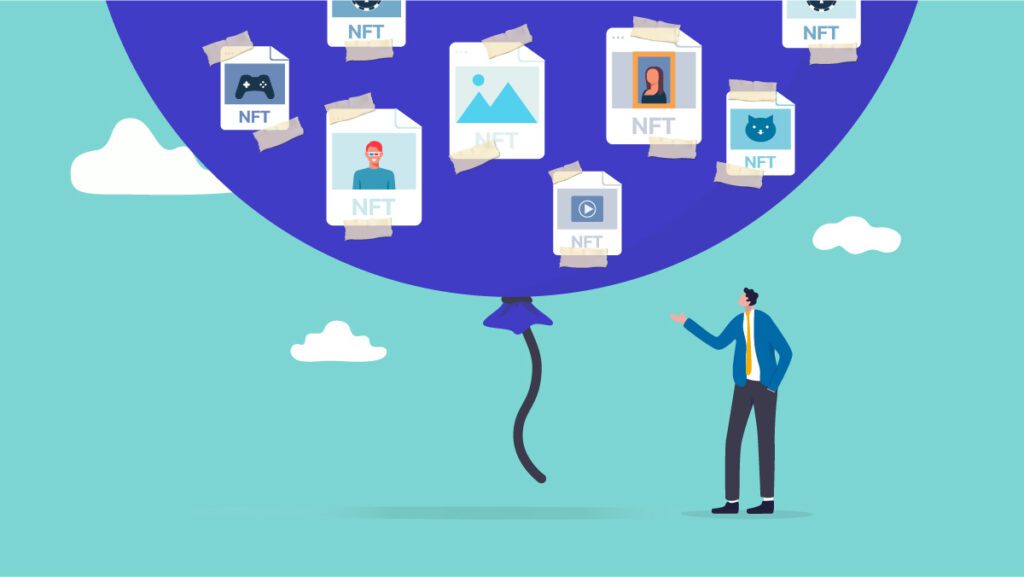
Is this it? Are we seeing the downfall of NFTs? Is the craze over? Can teenagers go back to working part-time instead of netting fortunes flipping Devious Ducks and Greedy Gorillas? Can the world return to normal, please? Well, the answer is a little bit more nuanced than a simple yes or no, but mostly, no, NFTs are here for a while. There will be major changes ahead.
One can easily conclude that NFTs are coming to an end seeing the most recent news of the plummet in NFT sales compared to previous years, and many can understandably celebrate the end of a trend that flooded every corner of the internet for over 18 months. The conclusion may be a little off. NFTs are a young market, and it is too early to tell where it will go. A few dips in sales here and there don’t mean much in the long term, but what we do know is that the “craze” period is practically over.
The alluring and magical effect of a great new technology that promises to free the world from poverty and liberate the masses from the oppression of the banking sector is done.
Investors, creators, flippers, enthusiasts, and artists are all more aware of what the NFT market is all about. People know what to look for and what to avoid, what works and what doesn’t, what to buy, and what to ignore.
NFTs Will Live on, But in What Form?
It would be unrealistic to expect the craze surrounding digital art with supposed utilities that do not stand the test of time to keep gaining momentum and investment.
Given that those involved in the NFT markets are more aware of the game now, we will likely see fewer small silly projects moving into the limelight and more serious efforts that are run like businesses.
The use of NFTs, however, goes far beyond Angry Avocados, Bored Apes, Tricky Tigers, or what have you. They are tokens, after all, with verifiable and unchangeable data that can be invaluable for any and all transactions, monetary or otherwise.
Unalterable data secured through decentralized cryptographic ledgers called blockchains means that one day you yourself will benefit from using your identity as an NFT. You will be able to transfer your medical data from one hospital to another without hassle or without reassessment. You will be able to buy and sell on a vast digital network without fear of hacking. You will be able to verify your ownership of physical goods without the need for a centralized authority – theoretically, at least. Again, it is still a young and developing market.
The disappearance of projects akin to Cool Cats and Crypto Punks does not spell the downfall of NFTs. In fact, it may very well mean the beginning of their rise.
Fundamentally, the verification of ownership bears immense opportunity now and in the future. In an increasingly complex digital world, with or without a so-called ‘Metaverse,’ NFTs are tools that will become indispensable.
Digital Identification, or DIDs, will one day be the norm. They could one day replace IDs, Passports, birth certificates, medical records, and more. NFTs are the basis for this aspect of digital transformation. One day you will be able to walk into a store, pick up an item, and put it in your backpack.
Analysis
One can argue that calling the NFT bubble a bubble is using the wrong analogy. Bubbles pop, but the craze surrounding NFTs exploded like the Big Bang and then slowed down over time as it found its footing and gained some clarity and form.
Yes, people pumped obscene amounts of money into projects that they themselves did not understand, and yes, many undeserving money-grubbing goblins ran off with immense profits and delivered no value, but that is what happens when we are swept up by the hype.
Now that all the junk is burned away and the hype has subsided, and while it may seem like the downfall of NFTs, we are actually seeing more projects and initiatives using NFTs exactly the way they were meant to be used;
- Exclusive membership
- Medical records and identification
- Asset tokenization
- Ticketing and reward programs
- Intellectual property and patents
- Art and patronage
As far as the current form of NFTs we see today, we will probably see more quality than quantity. The projects that will make millions won’t be those with ambitious promises and wacky artwork alone, which is easy to put together and release in a few days, if not less.
While all the best NFT projects have and are being run like startups, with teams of developer marketers, artists, writers, and so on, the last two years have been fraught with degenerate money grabbers, scammers, get-rich-quick schemes, and half-baked efforts. Those are some of the reasons that most NFT projects fail, not unlike most startups and businesses.
We will see fewer projects overall as the promise of easy money fades, but the projects that do come up will be serious endeavors with real plans, real utility, and real ownership of something valuable.
Summary
The downfall of NFTs has not yet come. In a global reception, it is tough to come to a solid conclusion, and it is a time when the old skin sheds and the new skin shines. We are witnessing a period where the NFT market is fizzling down to the fundamentals and where NFT enthusiasts know the game better than they did over two years ago. The NFT market is going through a transformation that just happens to be coinciding with one of the biggest market crashes of the decade. Down, but not out.